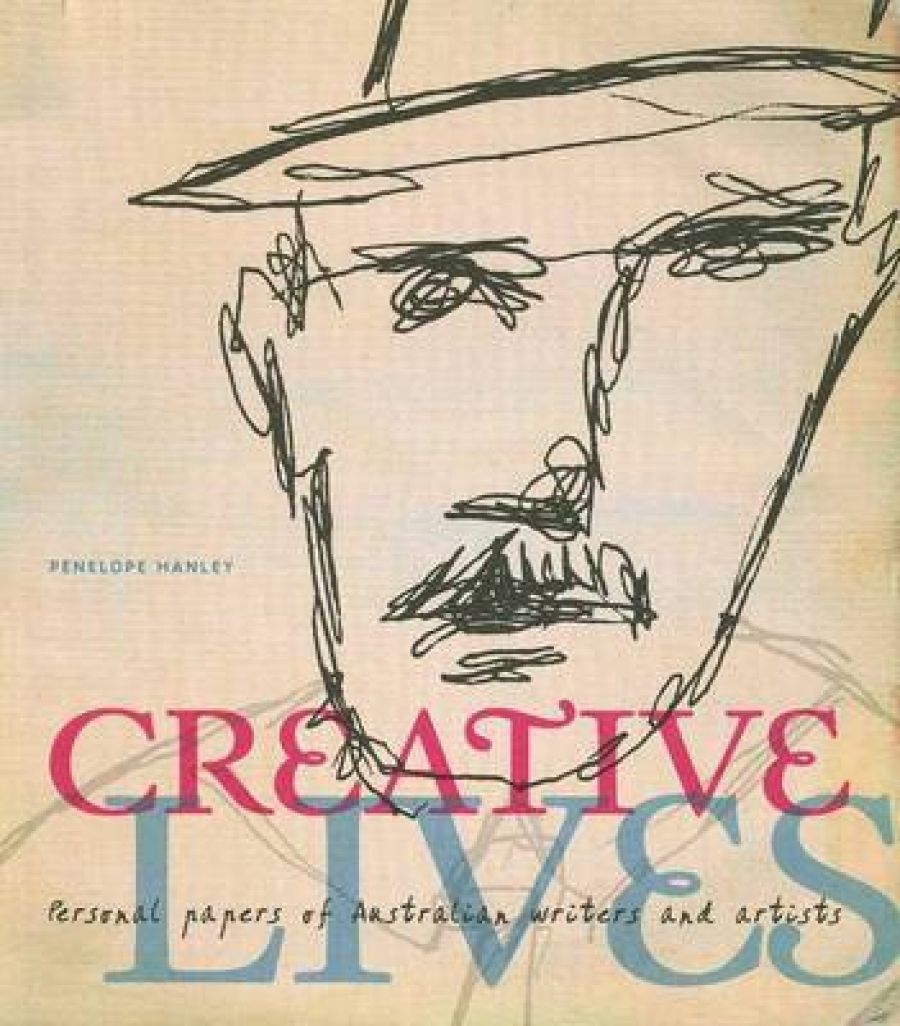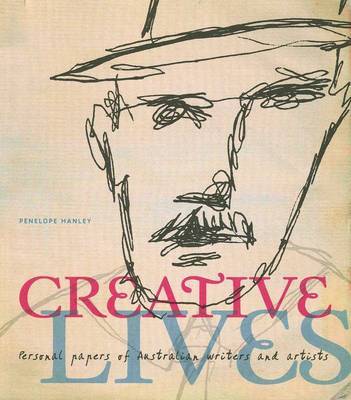
- Free Article: No
- Contents Category: Biography
- Review Article: Yes
- Article Title: Paper lives
- Article Subtitle: Adroit summaries of twenty-two writers
- Online Only: No
- Custom Highlight Text:
Creative Lives presents short biographical essays on twenty-two Australian writers (two of whom are also notable artists); but it is just as much a book about the value and purpose of the National Library of Australia’s Manuscripts Collection. Ironically, the book offers little documentation of the process by which it came to be written. Hanley does tell us, however, that she ‘was asked to write a book on twenty of the writers whose papers are held in the Manuscripts Collection’ and eventually chose twenty-two.
- Book 1 Title: Creative Lives
- Book 1 Subtitle: Personal papers of Australian writers and artists
- Book 1 Biblio: National Library of Australia, $39.95 pb, 204 pp
- Book 1 Cover Small (400 x 600):

Had any one of these decisions gone another way, a very different book (or no book at all) would have resulted. Once tugged, this particular knot unravels further and further – at least as far back as the choice of a federal model for the political union of Britain’s Australian colonies, and the decision to make the Commonwealth Parliamentary Library the nucleus of a National Library. A confederacy, say, might have developed a cooperative library system, but there could have been no single ‘national library’. If the Library had grown out of one of the larger and older State Libraries – New South Wales or Victoria – its collections would have grown quite differently: instead of starting from scratch, it would have been defined from the beginning by existing strengths and weaknesses.
Of Hanley’s twenty-two subjects, only two (James Tucker and Henry Lawson) died before the name ‘Commonwealth National Library’ was adopted in 1923. Two others (Miles Franklin and Henry Handel Richardson) died before the passage of the National Library Act 1960 and the completion of the current building on the shores of Lake Burley Griffin. That is, the vast majority were in a position to donate or sell their papers to the National Library; very few, however, opted to do so.
Manuscript librarians, as a professional group, have deep philosophical objections to splitting collections of personal papers; but Hanley’s ‘Notes on the Manuscripts’ make it clear that very few writers share those concerns. Only a handful of the writers featured in Creative Lives can be said to have taken deliberate steps to ensure the preservation of their records as a coherent entity in a single institution; in most cases, even when there is an institution that holds the ‘major archive’, there are significant holdings in several others.
Further, the writers who have preserved and presented a coherent set of records that cover their entire career are a tiny minority: understandably, very few collections of papers offer thorough documentation of the early stages of careers. Until a writer (or anyone else for that matter) has achieved a measure of success, he or she has little incentive to ‘auto-archive’: that is, to organise their working notes and drafts, or their current financial records, let alone birthday cards and photograph albums, with an eye to posterity and the world at large; and no public institution can afford to fill its shelves with unknown writers’ papers on the off chance that they might become famous one day; storage space is finite, and so are the resources for arrangement and description. Record keepers and archivists are faced daily with the delicate task of deciding which documents fit within their institution’s ambit and which have that magical ‘definite research value’. To put it another way, public institutions can only select what is already recognisable as significant.
Patrick White’s manuscripts exemplify the difficulties of defining and assembling a collection of a writer’s papers. In a famous letter to George Chandler, Director General of the National Library, in 1977, White asserted that he routinely destroyed the drafts of his books as they were published, and that he asked his friends to destroy his letters. He wanted, he said, his published works to stand as his monument. His correspondents routinely ignored his wishes, and within a few years of his death in 1990 his biographer David Marr had located some 3000 letters. Drafts of White’s works seemed for a long time to be a different matter: over a dozen years of painstaking research, Brian Hubber and Vivian Smith located a mere nineteen, mostly typescripts of White’s plays. Hubber and Smith’s monumental Patrick White: A Bibliography was published in 2004. In 2006, Barbara Mobbs, White’s long-time literary agent, revealed that she had in her possession a large number of his manuscripts, mostly from the period after the letter to Chandler; these now comprise one of the National Library’s most significant literary collections.
There is solid evidence that at least until 1977 White did indeed routinely destroy his drafts; why he altered this practice late in life will never be known, but the key point is that White’s records were shaped by deliberate acts of destruction up to the mid-1970s, and by an ambiguous failure to maintain that policy of systematic destruction in his final years. Whatever White’s surviving papers are, they are not a complete record of his life or writing career. Galling as Mobbs’s revelation was for White’s bibliographers, it remains true that the great novels that made his name in the 1950s and 1960s exist only in their published form. Again, White’s existing papers are the product of a long series of decisions.
Writers’ and artists’ personal records are valuable for what they can reveal about the intellectual and material circumstances of creative work. The obvious danger of focusing on the facts of a writer’s life is a simplistic autobiographical reading of complex creative work; but a sensitive exploration of the contexts of a work can greatly enrich our understanding. Each of Hanley’s chapters adroitly mixes a concise summary of its subject’s achievements with some key or quirky episodes drawn from the manuscripts at the National Library. None is the final word on its subject – quite the opposite. At very least, Hanley’s brief lives will draw new readers to these twenty-two writers, and offer fresh perspectives to readers who are already familiar with them.


Comments powered by CComment